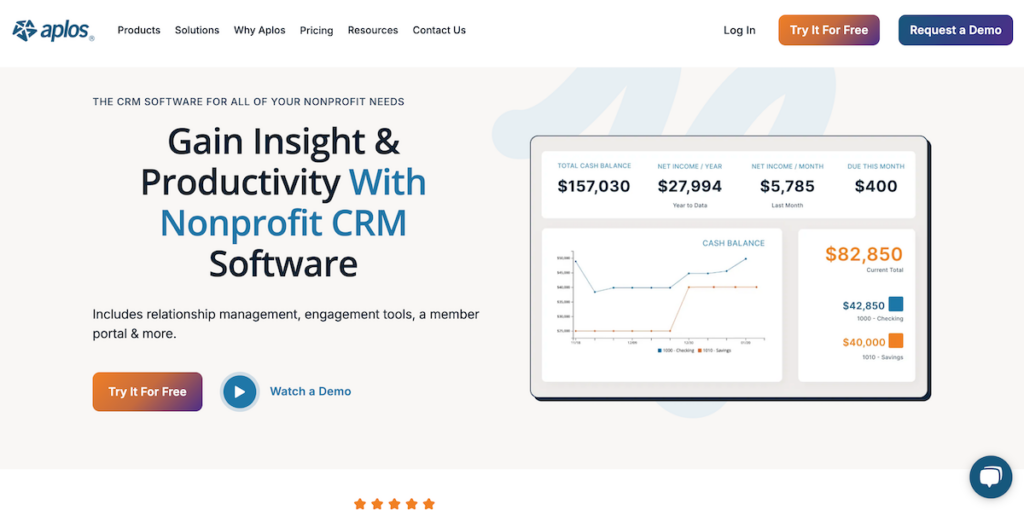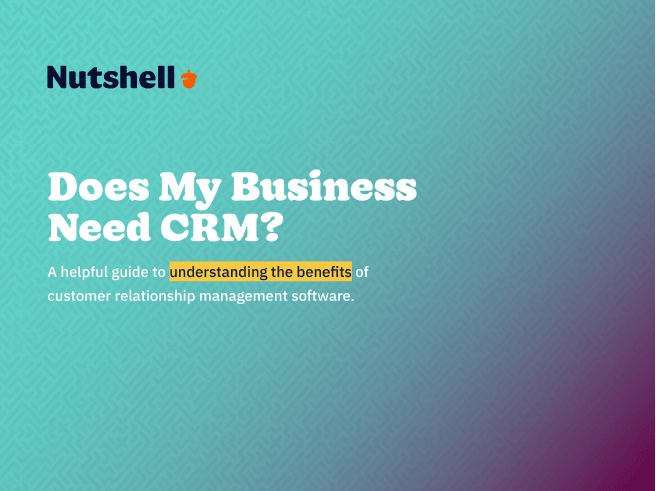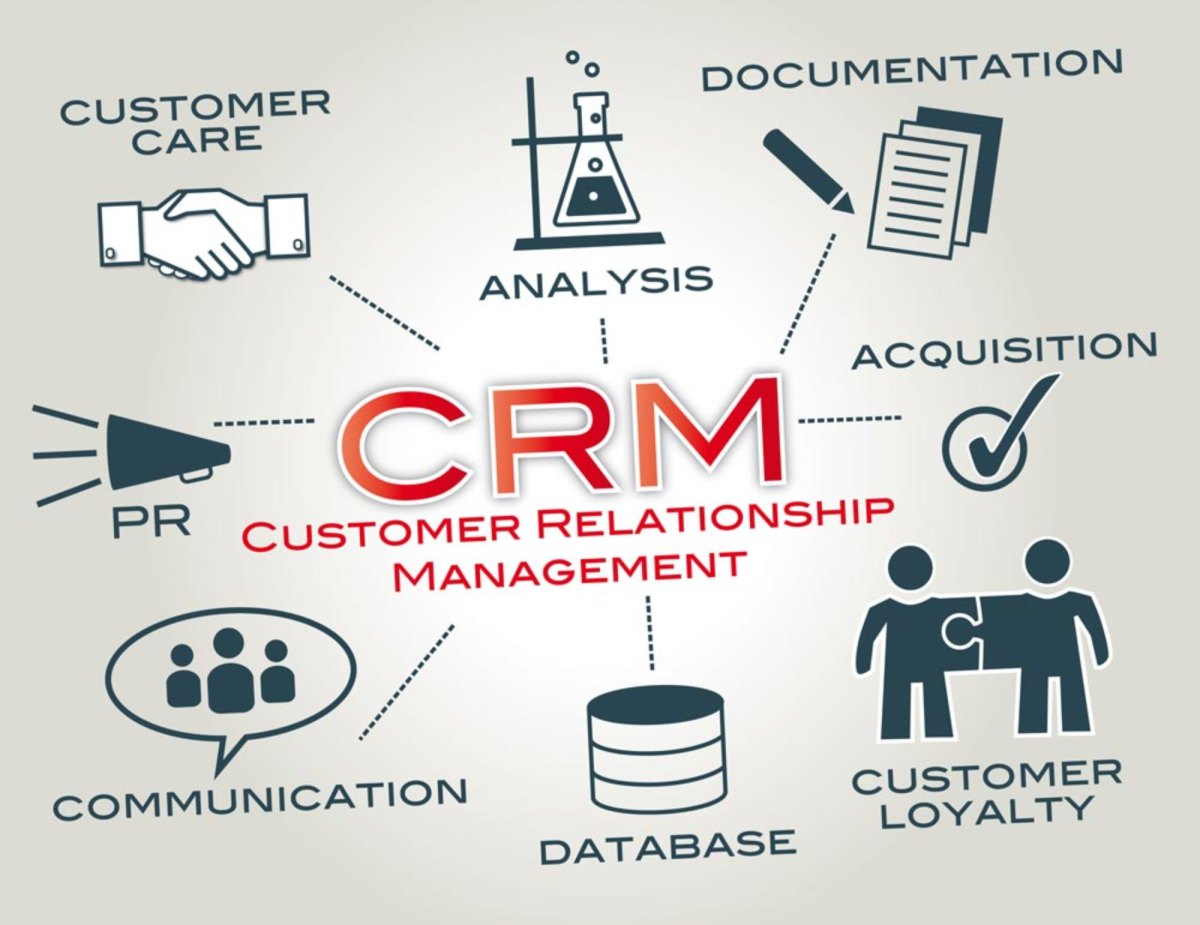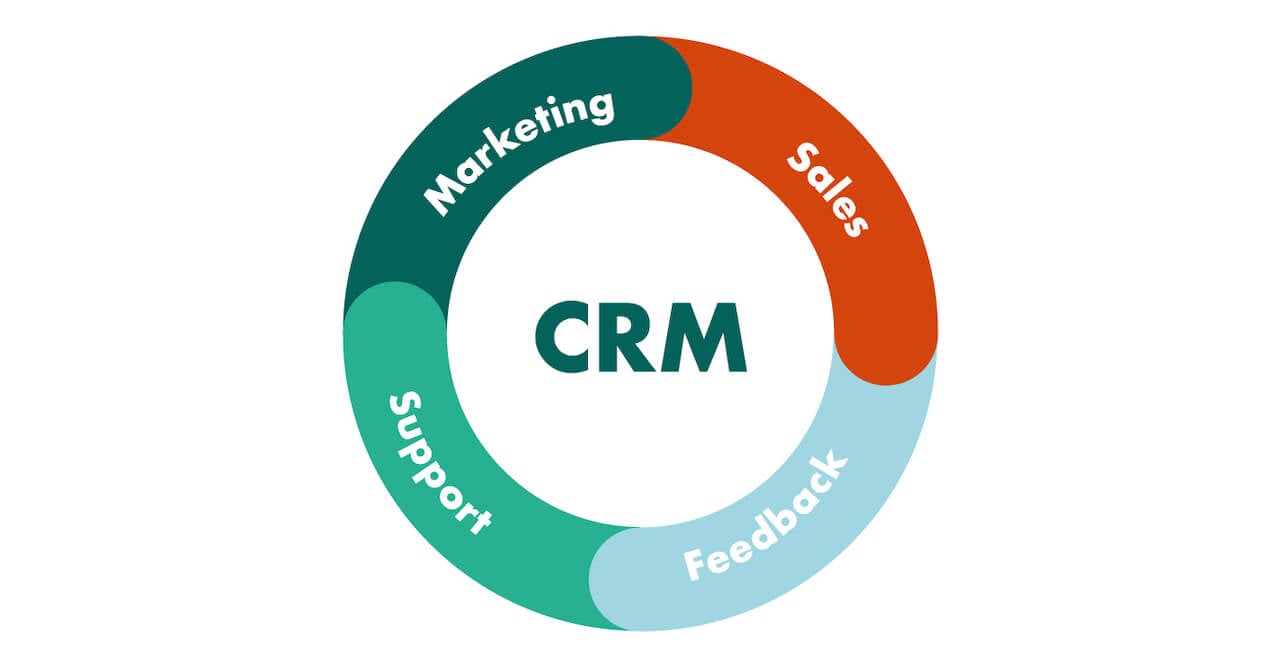Unlocking Nonprofit Success: The Ultimate Guide to the Best CRM Systems for Small Organizations
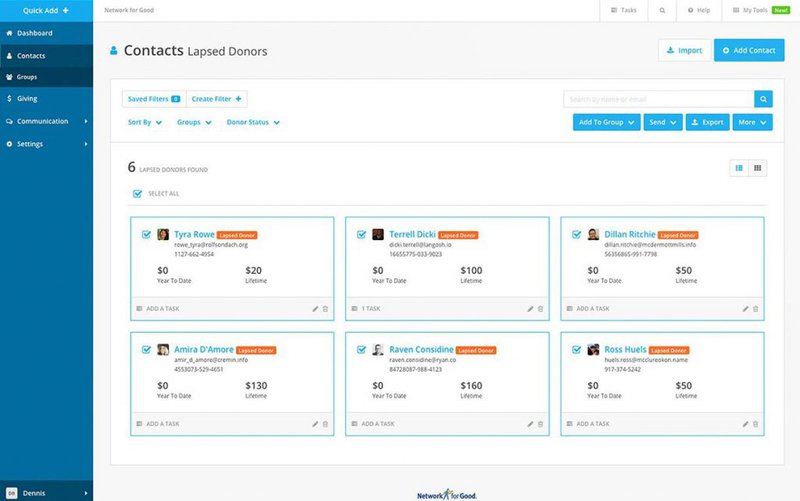
Unlocking Nonprofit Success: The Ultimate Guide to the Best CRM Systems for Small Organizations
Running a small nonprofit is a labor of love. You’re driven by a passion to make a difference, whether it’s feeding the hungry, protecting the environment, or advocating for social justice. But let’s be honest, it’s also a lot of work. You’re juggling fundraising, volunteer management, program delivery, and a mountain of administrative tasks. In this whirlwind, staying organized and connected is absolutely critical. That’s where a Customer Relationship Management (CRM) system comes in – but not just any CRM. You need the *best* CRM for small nonprofits: a system that’s affordable, user-friendly, and packed with features that actually help you achieve your mission.
This comprehensive guide will walk you through everything you need to know about choosing the perfect CRM for your small nonprofit. We’ll explore the key features to look for, the top CRM systems on the market, and how to implement a CRM successfully. Get ready to streamline your operations, boost your fundraising efforts, and ultimately, make a bigger impact on the world.
Why Your Small Nonprofit Needs a CRM
You might be thinking, “We’re a small organization; do we really need a CRM?” The answer is a resounding YES! While it might seem like an added expense, a CRM is actually an investment that will save you time, money, and headaches in the long run. Here’s why:
- Centralized Data: Imagine having all your donor information, volunteer details, program participant records, and communication history in one place. No more spreadsheets scattered across different computers or lost contact information. A CRM provides a single source of truth for all your data.
- Improved Donor Relationships: A CRM allows you to track donor interactions, personalize communications, and segment your audience based on giving history, interests, and more. This leads to stronger relationships and increased donor retention.
- Efficient Fundraising: CRM systems often include features like donation tracking, automated receipt generation, and reporting tools that make fundraising more efficient. You can easily track your fundraising progress, identify top donors, and tailor your appeals for maximum impact.
- Streamlined Volunteer Management: Manage your volunteers effectively with features like volunteer recruitment, scheduling, communication, and tracking hours. A CRM can help you keep your volunteers engaged and make the most of their valuable time.
- Enhanced Program Management: Track program participants, monitor program outcomes, and generate reports to demonstrate the impact of your programs. A CRM can help you improve your program delivery and secure funding.
- Better Communication: Send targeted email campaigns, track email opens and clicks, and personalize your communications to different segments of your audience. A CRM helps you communicate effectively with your donors, volunteers, and program participants.
- Time Savings: Automate repetitive tasks, such as sending thank-you notes or generating reports, freeing up your staff and volunteers to focus on more important activities.
- Data-Driven Decision Making: Generate reports and analyze data to gain insights into your fundraising efforts, volunteer engagement, and program effectiveness. This data can inform your decision-making and help you improve your overall performance.
Key Features to Look for in a CRM for Small Nonprofits
Not all CRM systems are created equal. When choosing a CRM for your small nonprofit, you need to consider your specific needs and look for a system that offers the following key features:
1. Contact Management
This is the foundation of any good CRM. It allows you to store and manage contact information for donors, volunteers, program participants, and other stakeholders. Look for features like:
- Contact profiles: Store detailed information about each contact, including name, address, phone number, email address, and any other relevant information.
- Segmentation: Group your contacts based on various criteria, such as giving history, interests, location, or program participation.
- Activity tracking: Track interactions with contacts, such as phone calls, emails, meetings, and donations.
- Notes and attachments: Add notes and attachments to contact profiles to store important information, such as meeting minutes or donor pledges.
2. Donation Management
If your nonprofit relies on donations (and most do!), you need a CRM that can handle donation management. Look for features like:
- Donation tracking: Record all donations, including the amount, date, and payment method.
- Recurring donation management: Set up and manage recurring donations, making it easier for donors to give on a regular basis.
- Online donation forms: Integrate online donation forms with your website to make it easy for donors to give online.
- Receipt generation: Automatically generate and send donation receipts to donors.
- Reporting: Generate reports on your fundraising efforts, such as total donations, average gift size, and donor retention rate.
3. Email Marketing
Email marketing is a critical tool for communicating with your donors, volunteers, and program participants. Look for a CRM that includes email marketing features, such as:
- Email templates: Create and customize email templates for different types of communications, such as newsletters, appeals, and thank-you notes.
- Segmentation: Segment your email list based on various criteria to send targeted messages to different groups of contacts.
- Automation: Automate email campaigns, such as welcome emails for new donors or thank-you emails for donations.
- Tracking: Track email opens, clicks, and conversions to measure the effectiveness of your email campaigns.
4. Volunteer Management
If your nonprofit relies on volunteers, you need a CRM that can help you manage your volunteer program. Look for features like:
- Volunteer recruitment: Collect volunteer applications and track volunteer interests and skills.
- Scheduling: Schedule volunteers for shifts and track their availability.
- Communication: Communicate with volunteers via email, text message, or phone.
- Hours tracking: Track volunteer hours and generate reports on volunteer contributions.
- Training management: Track volunteer training and certifications.
5. Reporting and Analytics
Data is your friend! A good CRM provides the reporting and analytics tools you need to track your progress, measure your impact, and make data-driven decisions. Look for features like:
- Customizable reports: Generate reports on various aspects of your organization, such as fundraising, volunteer engagement, and program outcomes.
- Dashboards: Create dashboards to visualize key metrics and track your progress over time.
- Data export: Export your data to other applications, such as Excel or Google Sheets.
- Integration with other tools: Integrate your CRM with other tools, such as your accounting software or website platform.
6. Integrations
Think about the other tools you use. Does your CRM integrate with them? Integrations save time and reduce errors. Consider these integrations:
- Payment Gateways: Does it connect with Stripe, PayPal, or other payment processors?
- Accounting Software: Can it sync with QuickBooks, Xero, or other accounting programs?
- Email Marketing Platforms: Does it integrate with Mailchimp, Constant Contact, or similar services?
- Website Platforms: Can you easily embed donation forms or integrate with your website?
7. Mobile Accessibility
In today’s fast-paced world, you need to be able to access your CRM on the go. Look for a CRM that offers a mobile app or a mobile-friendly interface.
8. Security and Data Privacy
Protecting your data is paramount. Choose a CRM that offers robust security features, such as data encryption, user authentication, and regular backups. Ensure the provider complies with relevant data privacy regulations, such as GDPR and CCPA.
9. User-Friendliness and Ease of Use
A CRM is only useful if your staff and volunteers actually use it. Look for a system that is easy to learn and use, with a clean and intuitive interface. Consider the level of technical expertise of your team and choose a CRM that matches their skill level.
10. Customer Support
When you run into problems, you’ll want access to reliable customer support. Look for a CRM provider that offers responsive and helpful support, such as online documentation, email support, phone support, and live chat.
Top CRM Systems for Small Nonprofits
Now that you know what to look for, let’s explore some of the top CRM systems for small nonprofits:
1. Bloomerang
Bloomerang is a CRM specifically designed for nonprofits, making it a great option for organizations of all sizes. It has a strong focus on donor engagement and retention, with features like automated workflows, donor segmentation, and personalized communications. Bloomerang offers a user-friendly interface, robust reporting capabilities, and excellent customer support. Its pricing is generally considered affordable for small to mid-sized nonprofits, and it offers a free trial to test the platform.
- Pros: Designed specifically for nonprofits, strong focus on donor retention, user-friendly, excellent customer support.
- Cons: Can be more expensive than some other options, some advanced features may require additional add-ons.
- Ideal for: Nonprofits focused on donor engagement and retention, looking for a user-friendly system.
2. Neon CRM
Neon CRM is a comprehensive CRM system that offers a wide range of features, including donation management, event management, membership management, and volunteer management. It’s a good option for nonprofits that need a feature-rich system with a lot of flexibility. Neon CRM offers various pricing plans to suit different budgets, and it provides a good level of customer support.
- Pros: Feature-rich, customizable, good for organizations with diverse needs.
- Cons: Can be more complex to set up and use than some other options, customer support can be slow at times.
- Ideal for: Nonprofits with diverse needs and a need for a feature-rich, customizable system.
3. Salesforce.org Nonprofit Cloud
Salesforce.org Nonprofit Cloud is a version of the popular Salesforce CRM platform specifically designed for nonprofits. It offers a powerful and scalable solution with a wide range of features, including contact management, donation management, fundraising, program management, and volunteer management. Salesforce.org offers a free edition for eligible nonprofits, making it a cost-effective option for smaller organizations. However, implementing Salesforce can be complex, and you may need to hire a consultant to help you set it up.
- Pros: Powerful and scalable, wide range of features, free edition available.
- Cons: Can be complex to set up and use, requires some technical expertise.
- Ideal for: Larger nonprofits that need a scalable and feature-rich CRM, organizations with technical expertise.
4. Kindful
Kindful is a user-friendly CRM designed for small to mid-sized nonprofits, with a focus on ease of use and affordability. It offers a range of features, including donation management, donor segmentation, email marketing, and reporting. Kindful integrates with popular payment processors and email marketing platforms, making it easy to get started. It offers a simple interface, and its pricing is generally competitive. Kindful is a good option for nonprofits that prioritize simplicity and ease of use.
- Pros: User-friendly, affordable, integrates well with other tools.
- Cons: Fewer advanced features than some other options, may not be suitable for complex organizations.
- Ideal for: Small to mid-sized nonprofits that prioritize ease of use and affordability.
5. Aplos
Aplos is a CRM that offers both CRM and accounting features, making it a good choice for nonprofits that want to manage their finances and donor relationships in one place. It offers a range of features, including donation tracking, online giving, email marketing, and financial reporting. Aplos is known for its ease of use and its affordable pricing. If you’re looking for a combined CRM and accounting solution, Aplos is a great option.
- Pros: Combines CRM and accounting features, affordable, user-friendly.
- Cons: May not have as many features as some other CRM systems.
- Ideal for: Nonprofits that want a combined CRM and accounting solution.
6. DonorPerfect
DonorPerfect is a comprehensive CRM with a long history in the nonprofit sector. It’s known for its robust features, including donor management, fundraising, event management, and reporting. It offers a wide range of integrations and customization options, making it a good choice for nonprofits with complex needs. While the initial setup can be a bit involved, DonorPerfect is a powerful tool that can help you manage all aspects of your organization.
- Pros: Robust feature set, customizable, good for established organizations.
- Cons: Can be more expensive than some other options, setup can be involved.
- Ideal for: Established nonprofits with complex needs and a need for a comprehensive system.
7. Zoho CRM
While not exclusively for nonprofits, Zoho CRM is a versatile and affordable option that can be customized to meet the needs of small organizations. It offers a wide range of features, including contact management, sales automation, and marketing automation. Zoho CRM is known for its user-friendly interface and its affordable pricing. It also has a robust free plan for very small organizations. It is a good option for organizations that want a flexible and affordable CRM solution.
- Pros: Affordable, user-friendly, versatile, good free plan.
- Cons: Not specifically designed for nonprofits, requires some customization.
- Ideal for: Small nonprofits that want a flexible and affordable CRM solution.
How to Choose the Right CRM for Your Nonprofit
Choosing the right CRM is a crucial decision, and it’s one that shouldn’t be taken lightly. Here’s a step-by-step process to help you make the right choice:
1. Assess Your Needs
Before you start looking at different CRM systems, take some time to assess your organization’s needs. Consider the following questions:
- What are your current challenges? What are the biggest pain points in your current operations?
- What are your goals? What do you want to achieve with a CRM? (e.g., increase donations, improve donor retention, streamline volunteer management)
- What are your key processes? How do you currently manage your donors, volunteers, and programs?
- What features do you need? Make a list of the essential features you need in a CRM, based on your goals and processes.
- Who will be using the CRM? Consider the technical skills and experience of your staff and volunteers.
2. Set Your Budget
CRM systems vary in price, from free to thousands of dollars per month. Determine how much you can realistically afford to spend on a CRM, including ongoing costs such as software licenses, training, and support. Remember to factor in the potential return on investment (ROI) of a CRM, which can include increased donations, improved efficiency, and reduced administrative costs.
3. Research CRM Systems
Once you have a clear understanding of your needs and budget, start researching different CRM systems. Read reviews, compare features, and visit the vendors’ websites. Consider the systems listed above and any others that you discover. Look for systems that:
- Meet your essential feature requirements.
- Fit within your budget.
- Are user-friendly and easy to learn.
- Offer good customer support.
- Integrate with your existing tools.
4. Request Demos and Free Trials
Narrow down your list of potential CRM systems to a few finalists. Request demos from the vendors to see the systems in action and ask questions. Take advantage of free trials to test the systems and see if they’re a good fit for your organization. This hands-on experience will help you determine which system is the best choice.
5. Get Feedback from Your Team
Involve your staff and volunteers in the decision-making process. Ask them for their feedback on the different CRM systems you’re considering. Their input can help you choose a system that they will actually use and that will meet their needs.
6. Make Your Decision
After you’ve gathered all the information, it’s time to make your decision. Choose the CRM system that best meets your needs, budget, and technical requirements. Consider factors like ease of use, features, customer support, and integration capabilities.
Implementing Your New CRM: A Smooth Transition
Once you’ve selected your CRM, it’s time to implement it. Here’s how to make the transition as smooth as possible:
1. Plan Your Implementation
Develop a detailed implementation plan that includes the following steps:
- Data migration: Decide how you will migrate your existing data into the new CRM.
- Customization: Determine how you will customize the CRM to meet your specific needs.
- Training: Plan how you will train your staff and volunteers on how to use the new CRM.
- Testing: Test the CRM to ensure that it’s working correctly.
- Go-live date: Set a go-live date and plan for the transition.
2. Migrate Your Data
Migrating your data is a critical step. Clean up your data before migrating it to ensure accuracy. Your CRM provider may offer data migration services, or you may need to do it yourself. Ensure all of your contacts, donations, and volunteer information are transferred correctly.
3. Customize Your CRM
Customize the CRM to meet your specific needs. This may involve configuring settings, creating custom fields, and designing custom reports. Make sure the system reflects your specific workflows and processes.
4. Train Your Staff and Volunteers
Provide comprehensive training to your staff and volunteers on how to use the new CRM. Offer training sessions, create user guides, and provide ongoing support. The better trained your team is, the more successful your implementation will be.
5. Test Your CRM
Test your CRM thoroughly before going live. Make sure all the features are working correctly and that your data is accurate. Identify and resolve any issues before your entire team starts using the system.
6. Go Live and Provide Ongoing Support
Once you’re confident that the system is working correctly, launch the CRM. Provide ongoing support to your staff and volunteers. Address any questions or issues promptly. Encourage users to provide feedback and make improvements as needed.
Maximizing Your CRM’s Potential
Once you’ve successfully implemented your CRM, the work doesn’t stop there. To maximize its potential, consider the following:
- Regular Data Updates: Keep your data clean, accurate, and up-to-date.
- Utilize All Features: Explore and leverage all the features your CRM offers.
- Analyze Your Data: Regularly review your data to gain insights and improve your performance.
- Seek Training: Stay up-to-date on the latest CRM features and best practices.
- Get Feedback: Solicit feedback from your team to improve the CRM’s use and effectiveness.
Conclusion: The Power of the Right CRM
Choosing the right CRM system is a pivotal decision for any small nonprofit. It’s an investment in your organization’s future, enabling you to build stronger relationships, streamline operations, and achieve your mission more effectively. By carefully considering your needs, researching the options, and implementing the system correctly, you can unlock the power of a CRM and transform your nonprofit into a more efficient, impactful, and sustainable organization.
Remember, the best CRM for your small nonprofit is the one that meets your specific needs, fits within your budget, and is easy for your team to use. Take your time, do your research, and choose wisely. Your organization – and the people you serve – will thank you for it.

